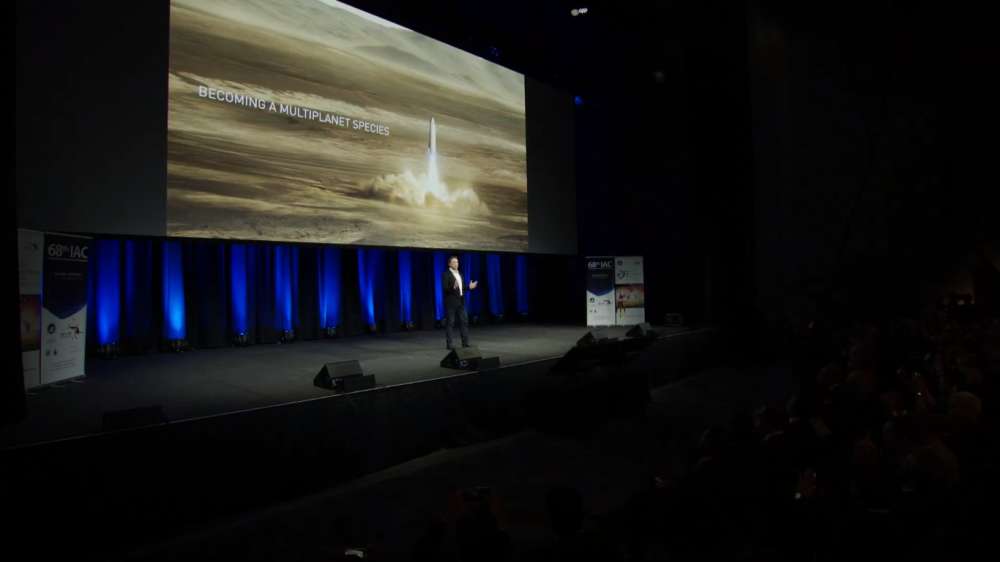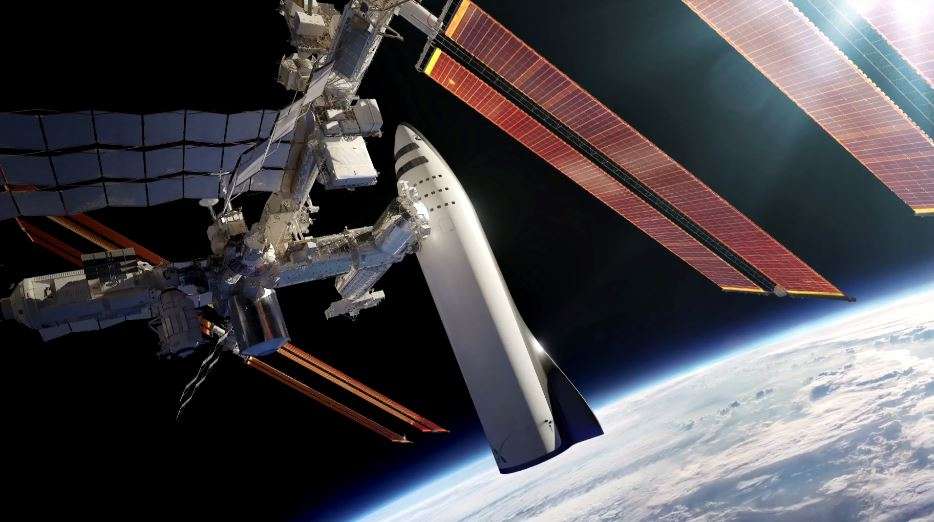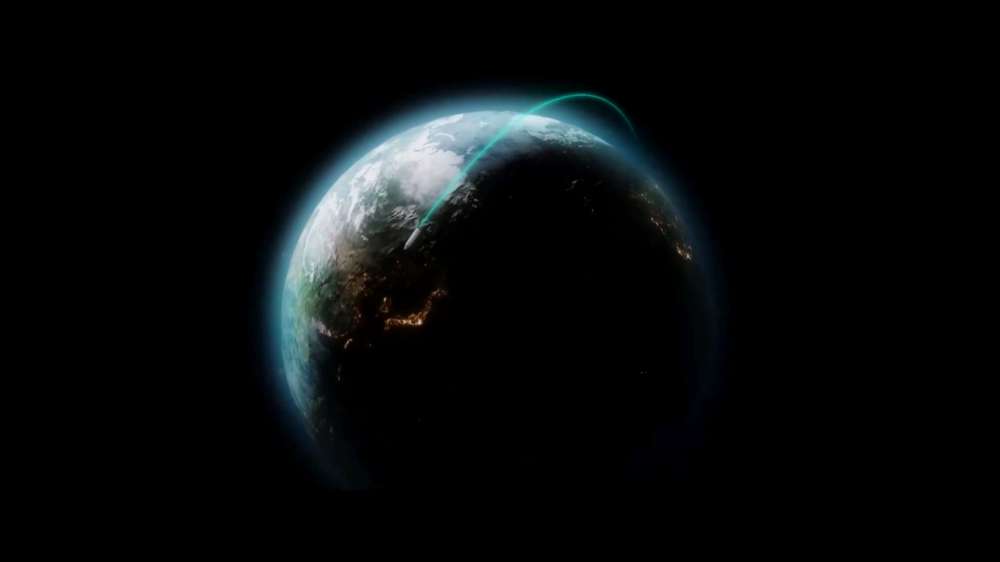The Battle for Mars
ex-iskon-pleme :: Društvo :: Znanost :: Na rubu znanosti
Page 2 of 3
Page 2 of 3 •  1, 2, 3
1, 2, 3 
 Re: The Battle for Mars
Re: The Battle for Mars
[size=39]It’s Official. Humans Are Going to Mars. NASA Has Unveiled Their Mission.
Detlev Van Ravenswaay[/size]
[size=12]IN BRIEF
Though the undertaking will no doubt include many challenges, NASA is finally ready to make humanity's dream of sending people to Mars a reality. To that end, the agency has shared its five-part plan for reaching the Red Planet.
THE MARS MISSION
Humanity has been fascinated by Mars since long before we stepped foot on the Moon. Our planetary neighbor has been the subject of innumerable works of sci-fi and inspired countless dreams of adventure and exploration. Now, after decades of determination, research, and scientific breakthroughs, we’re finally ready to do it: humans are going to Mars. Really.On March 21, President Trump issued a mandate for NASA: get people to Mars by 2033. One week later, NASA responded with its most detailed plan to date for reaching the Red Planet, and it details five phases along the road to Mars.
 Via NASA
Via NASAWe’re in Phase 0 now, conducting tests at the International Space Station (ISS) and developing partnerships with private space companies. Phase I will span 2018 to 2025 and will include the launch and testing of six SLS rockets. Those rockets will deliver components of the Deep Space Gateway (DSG), a new space station to be built near the Moon to serve astronauts en route to Mars.
After that, Phase II will launch the Deep Space Transport (DST) tube toward the lunar station in 2027, and in 2028 or 2029, astronauts will inhabit the tube for more than 400 days. In 2030, Phase III will see the DST restocked with supplies and the Mars crew via SLS rocket. Phase IV, of course, will be the trip itself in 2033.
That means we’re just a scant 16 years away from reaching a goal that has eluded every generation that came before us.
STAYING HEALTHY AND HAPPY
Completing the mission within their budget will be a challenge for NASA. That budget is currently about .5 percent of the total U.S. budget. For comparison, it was more than four percent during the Apollo Moon missions.The mission to Mars includes obstacles beyond budget — keeping astronauts healthy and reasonably happy on the journey is chief among them. Without stopovers between Earth and Mars, astronauts will need to port everything they need with them, including air, food, and water, for a round-trip duration of two or three years.
 [/size]
[/size]Click to View Full Infographic
[size][size]Mental health is likely to be a concern for Mars astronauts, too, as they will essentially be sealed into the space tube for years at a time, with no ability for an emergency return once they leave Cislunar space. NASA’s HI-SEAS isolation experiment has shown promising results, but it is likely that the journey won’t be possible for everyone.
NASA also has competition in the race to get to Mars. Both Boeing and SpaceX hope to get there first, with SpaceX setting the lofty goal of arriving in 2022.
Ultimately, though, we all benefit from the friendly competition in the race toward Mars and the creative solutions it will almost certainly generate. If private companies work out some of these human challenges before NASA can, the agency can build on their experiences and spend its budget and efforts on other problems. In the end, the goal of putting humans on Mars will have been reached, irrespective of which organization crosses the finish line first.[/size]
[/size]

My Brother Billo- Posts : 2237
2017-04-17
 Re: The Battle for Mars
Re: The Battle for Mars
http://www.businessinsider.com/nasa-mars-rover-prototype-seadek-2017-5?utm_content=buffer078ba&utm_medium=social&utm_source=facebook.com&utm_campaign=buffer-science

My Brother Billo- Posts : 2237
2017-04-17
 Re: The Battle for Mars
Re: The Battle for Mars
[size=33]Elon Musk Just Revealed Exciting New Details About His Plans To Colonize Mars
[size=33]18.0KSHARES
[/size][/size]
[size]
SPACE
 [/size]
[/size]
[size=11][size=11]WHAT MUSK'S MARS CITY WOULD LOOK LIKE. SPACEX[/size]

By Jonathan O'Callaghan
[size=11]29 SEP 2017, 08:27[/size]
Elon Musk has updated us on his plans to colonize Mars in typical Elon Musk fashion, outlining some rather grand goals and an ambitious roadmap to get there.
The SpaceX CEO revealed new details in a talk today at the International Astronautical Congress (IAC) in Adelaide, Australia. This was basically an update from the same talk last year, where Musk first unveiled his giant new rocket that he wanted to use to colonize Mars, the Interplanetary Transport System (ITS).
This time around the ITS name was noticeably absent, but the dreams were still here. Musk is now referring to the rocket as the BFR (Big F*cking Rocket), the original nickname for SpaceX's huge new launcher to go to Mars.
Now he wants the BFR to be SpaceX's main focus going forward. And he says they will launch the first vehicle by 2022, with a manned launch in 2024.
 Musk, as always, kept his audience gripped. SpaceX
Musk, as always, kept his audience gripped. SpaceX
“We want to make our current vehicles redundant,” said Musk. BFR would replace SpaceX's existing Falcon 9 and Dragon vehicles, and the upcoming Falcon Heavy.
Like last year, the ultimate – and some would say overly ambitious – plan is to use the BFR to transport 100 people at a time to the surface of Mars. The huge Shuttle-like vehicle launches on a reusable booster on Earth and is then able to make propulsive landings on Mars. With multiple launches, Musk envisions creating a Mars city.
 The audience laughed at seeing the size of the BFR compared to the International Space Station. SpaceX
The audience laughed at seeing the size of the BFR compared to the International Space Station. SpaceX
He also showed footage of the Raptor engine in action, which is the new rocket engine SpaceX is developing for the BFR. They showed one firing for 40 seconds, which is the amount of time needed to land on Mars. Ultimately the BFR would use 31 Raptor engines, which yes is rather a lot.
[ltr]

[/ltr][/size]
Twitter Ads info and privacy
[/ltr][/size]
The big criticism last year was funding. How was SpaceX going to afford this lavish endeavor, creating the biggest rocket in history? Musk attempted to address that today, noting that a smaller version of the BFR would have a wide range of uses.
“It can do everything that's needed in greater Earth orbit activity,” said Musk.
He envisions using the BFR to fly people around the world. Musk said this system could transport people between any two cities in less than an hour, with most taking around 30 minutes.
 Musk wants to make money by flying people around the world. SpaceX
Musk wants to make money by flying people around the world. SpaceX
Then, the BFR would be used to take people to the Moon, creating what Musk calls “Moon Base Alpha”. He didn't elaborate too much on these plans, although he did say the vehicle would be able to take off and return from the Moon without having to make new propellant.
“It's 2017, we should have a lunar base by now,” said Musk. “What the hell is going on?”
 Musk's vision for Moon Base Alpha. SpaceX[/size][/size]
Musk's vision for Moon Base Alpha. SpaceX[/size][/size]
[size=33]18.0KSHARES
[/size][/size]
Share on Facebook
Share on Twitter
[size]
SPACE
 [/size]
[/size][size=11][size=11]WHAT MUSK'S MARS CITY WOULD LOOK LIKE. SPACEX[/size]

By Jonathan O'Callaghan
[size=11]29 SEP 2017, 08:27[/size]
Elon Musk has updated us on his plans to colonize Mars in typical Elon Musk fashion, outlining some rather grand goals and an ambitious roadmap to get there.
The SpaceX CEO revealed new details in a talk today at the International Astronautical Congress (IAC) in Adelaide, Australia. This was basically an update from the same talk last year, where Musk first unveiled his giant new rocket that he wanted to use to colonize Mars, the Interplanetary Transport System (ITS).
This time around the ITS name was noticeably absent, but the dreams were still here. Musk is now referring to the rocket as the BFR (Big F*cking Rocket), the original nickname for SpaceX's huge new launcher to go to Mars.
Now he wants the BFR to be SpaceX's main focus going forward. And he says they will launch the first vehicle by 2022, with a manned launch in 2024.
 Musk, as always, kept his audience gripped. SpaceX
Musk, as always, kept his audience gripped. SpaceX“We want to make our current vehicles redundant,” said Musk. BFR would replace SpaceX's existing Falcon 9 and Dragon vehicles, and the upcoming Falcon Heavy.
Like last year, the ultimate – and some would say overly ambitious – plan is to use the BFR to transport 100 people at a time to the surface of Mars. The huge Shuttle-like vehicle launches on a reusable booster on Earth and is then able to make propulsive landings on Mars. With multiple launches, Musk envisions creating a Mars city.
 The audience laughed at seeing the size of the BFR compared to the International Space Station. SpaceX
The audience laughed at seeing the size of the BFR compared to the International Space Station. SpaceXHe also showed footage of the Raptor engine in action, which is the new rocket engine SpaceX is developing for the BFR. They showed one firing for 40 seconds, which is the amount of time needed to land on Mars. Ultimately the BFR would use 31 Raptor engines, which yes is rather a lot.
[ltr]

[/ltr][/size]
[size][size][size][ltr]
FollowSpaceX
@SpaceX
[ltr]SpaceX has completed over 1,200 seconds of firing across 42 main Raptor engine tests.[/ltr]
12:45 AM - Sep 29, 2017
3838 Replies
711711 Retweets
3,2083,208 likes
Twitter Ads info and privacy
[/ltr][/size]
The big criticism last year was funding. How was SpaceX going to afford this lavish endeavor, creating the biggest rocket in history? Musk attempted to address that today, noting that a smaller version of the BFR would have a wide range of uses.
“It can do everything that's needed in greater Earth orbit activity,” said Musk.
He envisions using the BFR to fly people around the world. Musk said this system could transport people between any two cities in less than an hour, with most taking around 30 minutes.
 Musk wants to make money by flying people around the world. SpaceX
Musk wants to make money by flying people around the world. SpaceXThen, the BFR would be used to take people to the Moon, creating what Musk calls “Moon Base Alpha”. He didn't elaborate too much on these plans, although he did say the vehicle would be able to take off and return from the Moon without having to make new propellant.
“It's 2017, we should have a lunar base by now,” said Musk. “What the hell is going on?”
 Musk's vision for Moon Base Alpha. SpaceX[/size][/size]
Musk's vision for Moon Base Alpha. SpaceX[/size][/size]
My Brother Billo- Posts : 2237
2017-04-17
 Re: The Battle for Mars
Re: The Battle for Mars

[size=32]“We Need To “Get Off” Earth…Now!” Says PENTAGON Undersecretary…NO JOKE!
April 23, 2017 Science 0 Comments

Today, the idea humans migrating from Earth to colonize another planet might still sound like science fiction. But the truth is, many experts believe it will ultimately be paramount to our survival. We heard it from Stephen Hawking and Elon Musk—now we’re hearing it from Winston Beauchamp, deputy undersecretary of the Air Force.
While speaking at a summit hosted by Defense One in Washington D.C., Beauchamp argued that nations on Earth must work together to “get the human race off this planet onto another planet.”
“There is an erosion of some of the commonly accepted standards and norms, and there’s concern about that as folks around the world have tried to find an advantage, find seams,” he added. “That’s part of the reason why we want to codify our norms and behavior in space because it is such an important domain, not just for us but for humanity.”
Beauchamp also warned that we must be mindful of collisions or debris in orbit that can cause catastrophic tragedies.
“We need to be able to operate in space, both to advance our state of technology and eventually get the human race off this planet onto another planet,” he noted. “We can’t do that if we have to try to fly through a shell of debris.”
Rear Admiral Brian Brown, head of the Navy Space Cadre, announced that the United States is already developing new norms for the future.
“Much like the maritime laws that we have, they are established over time by safe and responsible behavior and patterns of life,” Brown said. “That is something we are pushing for in a lot of different areas, so we don’t have miscalculations in space.”
This conversation comes after Stephen Hawking and Elon Musk publicly stressed the importance of mankind colonizing other words. Hawking made headlines for his warning that we would not make it through another 1000 years on Earth.[/size]

My Brother Billo- Posts : 2237
2017-04-17
 Re: The Battle for Mars
Re: The Battle for Mars
https://www.sci-techuniverse.com/2018/09/nasa-has-just-released-2540-stunning.html
_________________


Counter-Strike- Posts : 4231
2018-03-12
 Re: The Battle for Mars
Re: The Battle for Mars

Momentum grows for nuclear thermal propulsion
by Jeff Foust — May 22, 2019
 An illustration of a spacecraft for deep space missions powered by nuclear thermal propulsion. Congress has added funding to NASA appropriations bills to support development of the technology. Credit: NASA/Marshall
An illustration of a spacecraft for deep space missions powered by nuclear thermal propulsion. Congress has added funding to NASA appropriations bills to support development of the technology. Credit: NASA/MarshallPASADENA, Calif. — With congressional funding and industry support, nuclear thermal propulsion technology is making progress for potential use on future NASA deep space missions, although how it fits into the agency’s exploration architectures remains uncertain.
The House Appropriations Committee approved May 22 a commerce, justice and science (CJS) appropriations bill that offers $22.3 billion for NASA. That funding includes $125 million for nuclear thermal propulsion development within the agency’s space technology program, compared to an administration request for no funding.
“The bill’s investment in nuclear thermal propulsion is critical as NASA works towards the design of a flight demonstration by 2024,” said Rep. Robert Aderholt (R-Ala.), ranking member of the CJS appropriations subcommittee, during that subcommittee’s markup of the bill May 17. He offered similar comments in support of that project at the full committee markup.
The $125 million comes on top of $100 million that Congress provided in 2019, of which $70 million was earmarked for a flight demonstration by 2024. The report accompanying the House bill makes no mention of a 2024 date for a flight demonstration, but does call on NASA to develop “a multi-year plan that enables a nuclear thermal propulsion demonstration, including the timeline associated with the space demonstration, and a description of future missions and propulsion and power systems enabled by this capability.”
Nuclear thermal propulsion, where a fission reactor heats propellants like hydrogen that are then accelerated through a nozzle, holds the potential of reducing travel times for deep space missions, such as to Mars. While studied early in the Space Age, NASA programs in nuclear thermal propulsion were cancelled by the early 1970s and are only now being revisited.
The concept has support in Congress as well as the White House. “As we continue to push farther into our solar system, we’ll need innovative new propulsion systems to get us there, including nuclear power,” Vice President Mike Pence said in a March 26 speech at a National Space Council meeting in Huntsville, Alabama.
That renewed work in nuclear thermal propulsion is being led by the NASA Marshall Space Flight Center in Huntsville, which Pence alluded to in his remarks. “And the president and I know there’s no place on Earth better equipped to lead the world in pioneering these new propulsion technologies than Rocket City, U.S.A.”
Some outside NASA also say development of nuclear thermal propulsion is important. “Nuclear propulsion is key to exploiting our capabilities beyond low Earth orbit,” said Jeff Thornburg, chief executive and president of propulsion company Interstellar Technologies and a former propulsion executive with SpaceX and Stratolaunch.
Speaking on a panel at the Space Tech Expo here May 22, he supported additional work on that technology. “There’s some key technology development that really needs to happen beyond the current state of the art,” he said. That technology, coupled with electric propulsion, “are the future of how we’re going to facilitate that expansion.”
He acknowledged that, beyond the technological issues, there are regulatory ones involving such systems, whether operated by government agencies or in the private sector. He added, though, he was encouraged by comments at that March meeting of the National Space Council, where new Office of Science and Technology Policy Director Kelvin Droegemeier said his office would be reviewing nuclear space launch policy.
It’s unclear, though, how nuclear thermal propulsion fits into NASA’s long-term exploration plans. NASA’s exploration roadmaps, as well as many developed by companies and organizations, have relied on more conventional propulsion technologies, including chemical and solar electric propulsion. Those systems don’t offer the shorter travel times of nuclear thermal propulsion, but also avoid its technical and regulatory hurdles.
At a May 21 meeting of the NASA Advisory Council’s science committee, agency officials showed a manifest of missions projected through 2028 to carry out its planned human and robotic exploration of the moon and development of a Gateway in lunar orbit. None of the missions listed specified the use of nuclear thermal propulsion.
_________________


Counter-Strike- Posts : 4231
2018-03-12
 Re: The Battle for Mars
Re: The Battle for Mars
https://www.nasaspaceflight.com/2019/05/nasa-briefly-crew-dragon-anomaly-spacex-schedule/?fbclid=IwAR1DnFjwhd7ySkpX9DPya5U2SpwCv0gl6VkpNiz8uOjuddKHmxV8BpN6f9Y
_________________


Counter-Strike- Posts : 4231
2018-03-12
Page 2 of 3 •  1, 2, 3
1, 2, 3 
 Similar topics
Similar topics» Battle of Stalingrad Full Documentary
» Mars "Perseverance" Rover
» Marš za nezavisnost Škotske
» Marš Pegide u 14 zemalja
» Islamistički marš u Parizu
» Mars "Perseverance" Rover
» Marš za nezavisnost Škotske
» Marš Pegide u 14 zemalja
» Islamistički marš u Parizu
ex-iskon-pleme :: Društvo :: Znanost :: Na rubu znanosti
Page 2 of 3
Permissions in this forum:
You cannot reply to topics in this forum
 Events
Events Latest images
Latest images
 by My Brother Billo Mon 17 Apr - 19:56
by My Brother Billo Mon 17 Apr - 19:56









